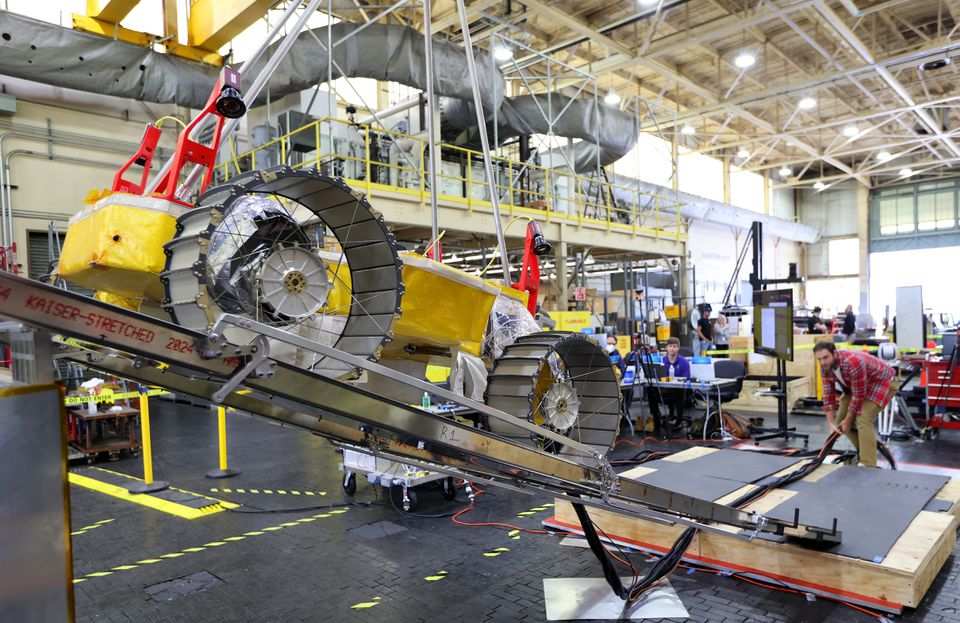Full-scale testing of NASA’s Volatiles Investigating Polar Exploration Rover, or VIPER, took place at NASA’s Glenn Research Center on Thursday, bringing it one step closer to its mission of mapping resources on the south pole of the moon.

VIPER will be ferried to the moon’s surface aboard the Griffin lunar lander, built by Astrobotic. But before it can get there, rigorous testing must be completed to ensure a successful mission in space.
The prototype VIPER began atop a model of the Griffin lunar lander. From there, the rover was “driven” down a ramp via waypoint, a step-by-step driving system. Waypoint driving is necessary due to the lag time between the earth and the moon, allowing for safe movement of the rover during its roughly 100-day mission on the moon’s surface.

The egress test, which took about 30 minutes, uses the latest hardware prototypes from NASA and Astrobotic to verify VIPER’s ability to safely exit the lander after touching down.
“The overall goal of VIPER’s mission is to look for water on the moon, on the south pole, and to characterize its distribution and also to look at other volatiles,” said Jasper Wolfe, a mission systems engineer.

He added, “It’s a very exciting path forward for the future space exploration. It opens a lot of doors for being able to have sustained human presence on the moon and venture further out into the solar system.”
Construction of the mission rover will begin later this year at NASA’s Johnson Space Center in Houston. Flight software and navigation system development will take place at NASA’s Ames Research Center in California’s Silicon Valley. Astrobotic will receive the complete rover with its scientific instruments in mid-2023 in preparation for launch. This mission is a part of NASA’s larger Artemis program.
___
© 2022 Advance Local Media LLC
Distributed by Tribune Content Agency, LLC.



